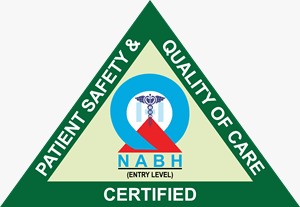About the Department
In 1957, a small Diagnostic Mycology Unit was organised in the Institute when Mr. H.S.Randhawa joined as Asstt. Research Officer (Mycologist) in the ICMR-sponsored project on bagassosis with Prof. R. Viswanathan as Principal Investigator. The unit functioned as a part of the Bacteriology Department (subsequently re-designated as Microbiology) headed by Lt. Col. A.J.H.deMonte. In the formative stage, it greatly benefited from the expertise and active support of Dr. Hans, F. Smetana, an eminent visiting pathologist from the Armed Forces Institute of Pathology, Washington, D.C., U.S.A.
Subsequently a full fledged Department of Medical Mycology was established in 1959. Over the years, the Department has emerged as a leading centre of research and teaching in pulmonary diseases caused by fungi and actinomycetes. Apart from an active research programme and teaching, its activities include running a mycological diagnostic service as well as maintenance and supply of reference cultures of pulmonary and systemic fungal pathogens. Over the years, 130 papers comprising original research articles, reviews and editorials have been published. Recognizing the notable contributions made by Department of Medical Mycology in the diagnosis and epidemiology of some of the important mycotic diseases in India and also perceiving the growing significance of these diseases particularly in immunocompromised hosts, the Indian Council of Medical Research sanctioned in 1985, a National Reference Centre for Respiratory Mycoses at the Institute. It is proposed to continue the programme of research training and reference diagnostic services of this centre. A brief reference is made below to some of the notable contributions of the Department.
Major Activities and Achievements
Research
1. Discovery of New Fungi
Seven new species of fungi have been reported. Circumstantial evidence relating to isolation and evidence from animal experimentation strongly indicated that one of these, Candida viswanathaii, is an opportunistic pathogen.
2. Paraffin Bait Technique and Nocardiosis
Paraffin bait technique was introduced for isolation on Nocardia asteroides, the etiologic agent of nocardiosis from sputum. The application of this technique has led to the ante-mortem diagnosis of bronchopulmonary nocardiosis in the largest series of cases as yet reported in the literature. The technique is now included in a number of text books or manuals of Medical Mycology and Microbiology.
3. Rapid Techniques
Several rapid techniques were introduced for the isolation and/or identification of Cryptococcus neoformans, the etiologic agent of cryptococcosis, and other yeast like fungi. This includes the Berthelot colour reaction, a simplified Guizotia abyssinica seed medium, L-Dopa ferric citrate medium and a modified inositol assimilation test. It may be pointed out that the simplified G.abyssinica seed medium (Quick Birdseed Agar) has been included in the standard text book: Medical Mycology, the Pathogenic Fungi and the Pathogenic Actinomyetes, by J.W.Rippon, W.B.Saunders Co., U.S.A., 1983, P.778.
4. Development of Serodiagnostic Reagents
Fungal antigens and hyper-immune sera were prepared and standardized in our Department for the first time in India for the serologic diagnosis of several pulmonary and systemic mycoses including aspergillosis, candidiasis and blastomycosis. A comprehensive mycoserologic survey, employing these indigenous reagents, revealed that allergic bronchopulmonary aspergillosis (previously assumed to be geographically restricted to the United Kingdom) is an important hypersensitivity mycotic disorder in India, warranting greater attention in the differential diagnosis of respiratory diseases.
5. Blastomycosis
Blastomyces dermatitidis, the etiologic agent of blastomycosis (until recently believed to be exclusively endemic in the American and African continents) was isolated for the first time from bat, Rhinopoma hardweickei, an insectivorous colonial species trapped from Delhi area. The pathogen was subsequently isolated from human clinical material for the first time. in India, indicating thereby its endemic occurrence in our country.
6. Evaluation of Culture Media for Rapid Isolation of Blastomyces ermatitidis
A comparative study was undertaken to find out the most efficacious culture medium for primary isolation of B.dermatitidis from sputum. The culture media evaluated were Sabouraud glucose agar with chloramphenicol and cycloheximide, Sabouraud agar with choramphenicol and ammonium hydroxide, yeast phosphate agar with chloramphenicol and cycloheximide and brain heart infusion-blood agar with egg albumin, chloramphenicol, cycloheximide and gentamycin. The results indicated that the supplemented yeast phosphate agar and brain heart infusion-blood agar were found to be the most promising isolation media with 100% recovery of B.dermatitidis. An investigation was also carried out to find an indigenous substitute for Pharmamedia (The Buckeye Cellulose Corporation, U.S.A.) which is a widely recommended culture medium for in vitro conversion of B.dermatitidis from its mycelial to yeast form. Pharmamedia is a cotton-seed derived protein nutrient exclusively marketed by the above- manufacturer and it is not readily available outside of North America due to import problems. Seven indigenous cotton-seed varieties representing Cassium hirsutum and G.arborrum were, therefore, evaluated for their efficacy to convert B. dermatitidis to yeast form using 2% glucose and 1.5% agar as a basal medium. The results indicated that all of the 7 cotton-seed varieties at 2% concentration were found to be as efficacious as Pharmamedia for the conversion of B. dermatitidis .
7. Bio-interactions between B.dermatitidis and Zoopathogenic fungi
The natural habitat of B.dermatitidis remains an enigma. The rarity with which this fungus has been isolated from the natural substrata is believed to be due to its extraordinary susceptibility to lysis by certain soil borne actinomycetes. Keeping this in view a study on bio-interactions between and six other zoopathogenic fungi was undertaken. The results indicated that certain pathogenic fungi such as Pseudallescheria boydii, Cryptococcus neoformans and Sporothrixz schenckii showed a marked antagonist for B.dermatitidis which proved to be a poor competitor vis-a-vis these fungi. Cryptococcus neoformans was the only antagonist which caused lysis of B.dermatitidis. The lysis of B.dermatitidis by C.neoformans had not been reported previously. The observations support the concept that the ecological niche of B.dermatitidis must be a highly specialized one in order to evade the competition by other microbes.
8. Studies on In Vitro Inhibition of B.dermatitidis by C.albicans
Goodman and Smith (1975) reported that C.albicans, a commensal yeast in the human respiratory tract, interfered with the isolation of B.dermatitidis and other dimorphic pathogenic fungi from clinical specimens. An experimental study was designed to verify this report and to investigate the underlying mechanism of inhibition of B.dermatitidis by C.albicans,. The culture media used for this study included peptone agar with variable glucose conqentrations, buffered peptone glucose agar, yeast extract agar and yeast extract phosphate agar, incorporating various dyes as pH indicators. The results indicated that glucose in the media was readily assimilated by C. albicans , leading to acid production, and a sharp decline in pH. This effect was, however, not seen in bufffered media and in glucose-free media. It was inferred that acidification of unbuffered glucose-rich media by C.albicans was inhibitory to B.dermatitidis. These observations indicated that glucose concentration was a major determinant of inhibition of B.dermatitidis by C.albicans.
9. Development of Murine Model of Systemic Blastomycosis
A non-lethal experimental model of murine blastomycosis was developed by intravenous inoculation of 102 yeast form cells of B.dermatitidis strains, S- 3922, VPCI-BR42, Kc-14 and IP-973. Twenty mice were infected with each of the B.dermatitidis strains. Groups of five mice from each infected group were sacrificed at 2, 4, 6 and 8 weeks post-infection, and the following parameters were studied: (I) Organ distribution of lesions, (2) Organ load of B.dermatitidis, (3) Delayed type hypersensitivity response, and (4) Antibody response. The study revealed that the lungs were the target organs of infection regardless of the B.dermatitidis test strains. Additionally, lesions in liver and spleen were produced by only the most virulent B.dermatitidis strains, S-3922. All of the B.dermatitidis test strains elicited cellular and humoral immune response with the peak at 4 weeks post-infection. The most virulent strain, S-3922, elicited the maximum footpad swelling (delayed type hypersensitivity) and the highest antibody titers whereas the least virulent strain, IP-973, elicited the minimum footpad swelling and the lowest antibody response.
10. A comparative Morphological Study of the Indian, American and African Isolates of B.dermatitidis
A comparative morphological study of the mold form of 9 B.dermatitidis strains was carried out, employing the light and scanning electron microscopes (SEM). The test strains included 3 isolates each from India, U.S.A. and Africa. The results showed that the conidia of the 3 Indian B.dermatitidis strains had a smooth wall. The 3 American strains showed a smooth or reticulated conidial wall. Macroconidia produced by these strains showed echinulations. The echinulated macroconidia of these strains resembled macroconidia of Histoplasma capsulatum. The conidia of 2 of the 3 African strains showed a smooth wall without any ornamentation whereas the conidia of one of the African strains showed echinulations similar to the macroconidia of H.capsulatum. It is now proposed to undertake comparative investigation of the antigenic composition and virulence pattern of these strains using conidial inoculum in a murine model of blastomycosis.
11. Role of Thermophilic Actinomycetes in Hypersensitivity Pneumonitis
A comprehensive study on the environmental occurrence of clinically important thermophilic actinomycetes and on prevalence of precipitating antibodies against them in sera of the exposed subjects has been concluded. The results indicated that farmhouses and work places of agro-based industries storing and processing vegetable substrata for finished products constitute a potential source of exposure to these microorganism. The demonstration of thermophilic actinomycete specific precipitating antibodies in sera of a significant number of exposed workers support this inference. It also revealed that amongst the various thermophilic actinomycetes, Faenia rectivirgula is perhaps the major cause of hypersensitivity pneumonitis in India. A number of workers related their respiratory symptoms with exposure to organic dust and associated microbiota. Based on clinical and serologic evidence, 5 con finned and 8 suspected cases of hypersensitivity pneumonitis were diagnosed. To the best of our knowledge this is the first authentic report on thermophilic actinomycete-induced hypersensitivity pneumonitis in India. Apart from developing indigenous expertise for production and standardization of immunologic reagents for their diagnosis, the study serves to underscore the importance of thermophilic actinomycetes as agents of hypersensitivity pneumonitis. A countrywide cooperative epidemiologic study is indicated to detennine the prevalence of these disorders particularly amongst the high risk occupational groups.
12. Natural Reservoirs of Pathogenic Fungi
In the course of studies on the natural occurrence of respiratory mycotic disease agents, the following significant findings were recorded.
(i) Demonstration of pigeon excreta as a natural habitat of Cryptococcus neogormans var. neoformans for the first time in India.
(ii) Documentation of zoophilic and geophilic character of Trichophyton simii, a new deratophyte reported from India by Stockdale (1965).
(iii) First isolation of Nacardia otitidiscavarium (Nocardia caviae), one of the agents of nocardiosis and actionmycetoma, from soil.
(iv) First isolation of Microsporum vanbreusegemii from soil.












.png)
.png)


